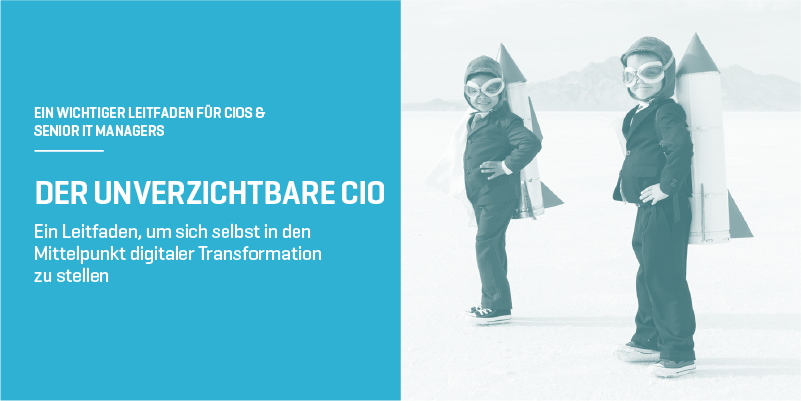
Die IT wird zunehmend aus den Entscheidungs- und Budgetierungs-Prozessen herausgelöst und ihre Beziehung zum Rest des Unternehmens hat sich irreversibel verändert. Verschärft wird dies durch eine Vielzahl von digitalen Transformations-Projekten, bei denen sich Führungskräfte nicht mehr von der IT abhängig fühlen. Dies führt zu einer Kluft zwischen Business und IT. Eine Kluft, die wir die Disruption Gap nennen. IT-Führungskräfte, die es nicht schaffen, diese Lücke zu schließen, werden an den Rand gedrängt und können ihren Wert für das Unternehmen zunehmend nicht mehr unter Beweis stellen.
“Die IT-Ausgaben des Geschäftsbereichs werden auf 50% der IT-Ausgaben des Unternehmens für einzelne Unternehmen steigen, wobei der Schwerpunkt auf der digitalen Unternehmens-Transformation liegt bzw. diese angestrebt wird.”1
Je mehr Menschen, die die IT initiieren, desto größer ist die Chance auf Überschreitung der Ausgaben durch Duplizierung, verpasste Gelegenheiten für Mengeneinkäufe und Shelfware. Daher ist es unerlässlich, dass die IT-Verantwortlichen den Umgang mit dem IT-Budget im Griff haben und klare Prognosen für die zukünftige Nachfrage haben.
Je mehr Menschen, die die IT initiieren, desto größer ist die Chance auf Überschreitung der Ausgaben durch Duplizierung, verpasste Gelegenheiten für Mengeneinkäufe und Shelfware. Daher ist es unerlässlich, dass die IT-Verantwortlichen den Umgang mit dem IT-Budget im Griff haben und klare Prognosen für die zukünftige Nachfrage haben.
Zunehmend müssen IT-Leiter nicht nur einzelne Projekte definieren und leiten, sondern stattdessen dem CFO und dem Führungsteam ein Verständnis für die Technologie-Budgetierung, die Aggregation von Ausgabenplänen im gesamten Unternehmen und die Zusicherung, dass Geld sinnvoll ausgegeben wird, vermitteln. Eine Reihe von Aufgaben, die ohne Einblick in den Technologieverbrauch nicht zu erfüllen sind. Dies erfordert ausgereifte Prozesse und erstklassige Analytik.
Dieses eBook erforscht:
- Die Möglichkeit für IT-Führungskräfte, Einblick in die Softwarenutzung und -ausgaben zu erhalten.
- Wie wird man zum Chief Broker der IT-Ausgaben im gesamten Unternehmen?
- Warum ein CIO zu einem unverzichtbaren Berater des Unternehmens werden sollte
1Gartner, Top Challenges and Must Do's for Technology Sourcing, Procurement and Vendor Management Leaders in 2017, 06 December 2016
